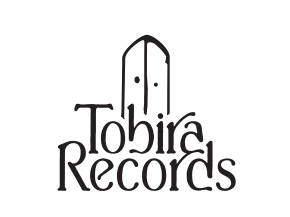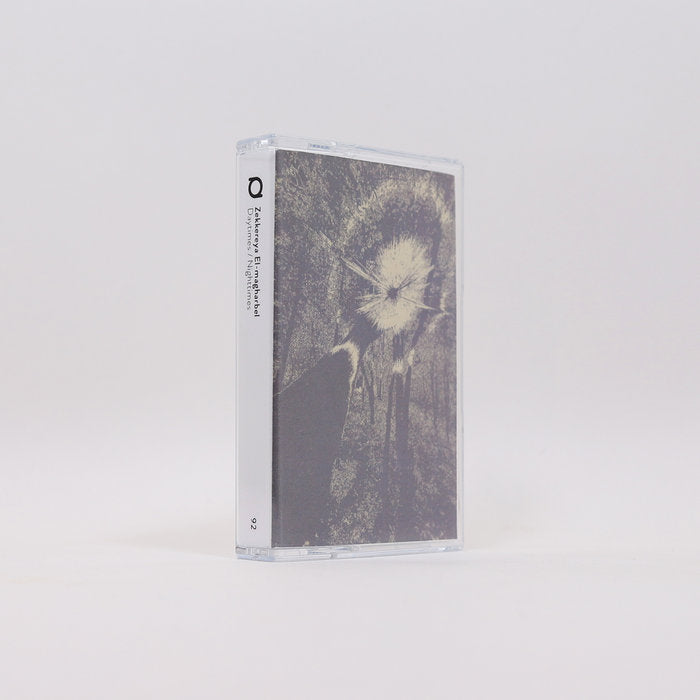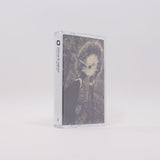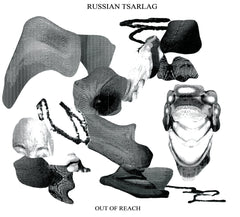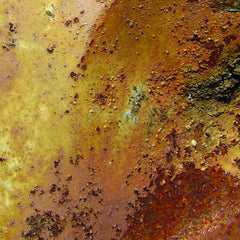Zekkereya El-magharbel // Daytimes / Nighttimes TAPE
- Availability:
アメリカ・デトロイトの実験音楽家Zekkereya El-magharbelが、2023年5月に同国LAの実験/物音レーベルDinzu Artefactsから50本限定でリリースするカセットです。
トロンボーンとSP-404を用いたロングフォームなアンビエントドローン〜ドローン2曲を収録。DLコード付属。
レーベルその他作品はこちら /// Click here to see more Dinzu Artefacts releases available at Tobira.
-------------------------
Includes DL code. Edition of 50.
Dinzu Artefacts:
"Daytimes / Nighttimes is a manifesto detailing the sonic possibility of abstraction through culture. Both works combine Trombone and SP-404 to create peaceful yet emotionally charged landscapes that juxtapose each other in character.
Zekkereya El-magharbel is an interdisciplinary artist currently living in Detroit. They have been a member of the Pan Afrikan Peoples Arkestra (Los Angeles) for almost 10 years and have worked/studied with luminaries such as Angel Bat Dawid, Tyshawn Sorey, Corey Smythe, Jaimie Branch, Steve Lehman, and George Lewis to name a few. Their main instrument is trombone and are currently conducting research on North African Maqam and adjacent sonic modalities.
zekkereyaa's profile picture"
++
Artist statement by Zekkereya El-magharbel:
"DAYTIMES
Western tuning makes me uneasy. In the wake of aural colonization, sometimes it feels like the only thing I truly know.
It’s also part of the reason why its so hard for me to internalize any music, other than that which has been maimed by it.
Even though Islamic 24-step tuning has more range for specificity, the 12 added quarter tones still do not truly encapsulate the spectrum of beautiful melodies that I hear.
This one, and ensuing “microtonal” notation systems, only provide a partial solution. They allow composers to write music that sounds different than what they’re used to hearing of the Western cannon, but still don’t attain the level of specificity of tuning models that exist outside of it.
This is an earnest attempt at embracing my true ear.
I accept that I am comforted by Western melodies,
because I know them so well.
I also accept, that I bare much bitter resentment towards this fact.
This piece is a letter of gratitude to John Coltrane, who's commitment, discipline, persistence, and heart, showed him the redeemable aspects of equal-temperament, in the form of its natural cyclicality. The geometric patterns explored by Coltrane abolish tonality, while still preserving a strong functionally harmonic core; the most elegant algorithm.
Coltrane’s music is a sonic pillar of creative freedom in the Black American artistic realm-
freedom from labels of what Black American Music what ought to be.
And yet, the very nature of the harmonic structure of Coltrane’s music, much like his own instrument, is European.
To find freedom for yourself and others,
in the unrelenting continued aural genocide of European settler colonialism and its legacy, is something I still strive toward.
NIGHTTIMES
night can be static in its stillness,
a small pool in which time blooms like algae,
wriggling spawn materialize out of nothing,
separated by the surface of the water.
for a moment,
your mild reflection is a portrait,
in dialogue with them,
your face is a tapestry for their consumption.
do not be afraid,
there is more to you than flesh
do not be afraid,
there is more to sleep than eyelids
there is no need to count the seconds,
there is no need to consult the sundial,
and though the pool is shallow,
it's a wonderful night for a dip
Nighttimes is an exploration of timelessness through the oversaturation of melody and harmony. These two spatial components of sound, can often help hold culture specific memory, and aid in conducting culture specific ritual. In the saturation and repetition of these components, I encounter catharsis in the form of a divine permission to lay down this burden to preserve culture in the face of white supremacy.
It's an oddly welcome permission amidst our zeitgeist of cultural militancy. In these unceasing waves of appropriation, and this era of declining cultural exchange, the invitation to not uphold any sort of cultural obligation is somewhat anxiety inducing. I found in accepting it, a new form of peace, that is both fearsome and electrifying. Not the peace championed by modernist liberalism as a sort of faux multiculturalism for BIPOC to chew on while our cultural essences are pillaged, but the peace brought about by immersion in the unknown as a human being that does indeed exist in an inescapable cultural matrix.
Im reminded of when the late-great painter Sam Gilliam was asked if abstract art was political. "
Artist : Zekkereya El-magharbel
Label : Dinzu Artefacts
アメリカ・デトロイトの実験音楽家Zekkereya El-magharbelが、2023年5月に同国LAの実験/物音レーベルDinzu Artefactsから50本限定でリリースするカセットです。
トロンボーンとSP-404を用いたロングフォームなアンビエントドローン〜ドローン2曲を収録。DLコード付属。
レーベルその他作品はこちら /// Click here to see more Dinzu Artefacts releases available at Tobira.
-------------------------
Includes DL code. Edition of 50.
Dinzu Artefacts:
"Daytimes / Nighttimes is a manifesto detailing the sonic possibility of abstraction through culture. Both works combine Trombone and SP-404 to create peaceful yet emotionally charged landscapes that juxtapose each other in character.
Zekkereya El-magharbel is an interdisciplinary artist currently living in Detroit. They have been a member of the Pan Afrikan Peoples Arkestra (Los Angeles) for almost 10 years and have worked/studied with luminaries such as Angel Bat Dawid, Tyshawn Sorey, Corey Smythe, Jaimie Branch, Steve Lehman, and George Lewis to name a few. Their main instrument is trombone and are currently conducting research on North African Maqam and adjacent sonic modalities.
zekkereyaa's profile picture"
++
Artist statement by Zekkereya El-magharbel:
"DAYTIMES
Western tuning makes me uneasy. In the wake of aural colonization, sometimes it feels like the only thing I truly know.
It’s also part of the reason why its so hard for me to internalize any music, other than that which has been maimed by it.
Even though Islamic 24-step tuning has more range for specificity, the 12 added quarter tones still do not truly encapsulate the spectrum of beautiful melodies that I hear.
This one, and ensuing “microtonal” notation systems, only provide a partial solution. They allow composers to write music that sounds different than what they’re used to hearing of the Western cannon, but still don’t attain the level of specificity of tuning models that exist outside of it.
This is an earnest attempt at embracing my true ear.
I accept that I am comforted by Western melodies,
because I know them so well.
I also accept, that I bare much bitter resentment towards this fact.
This piece is a letter of gratitude to John Coltrane, who's commitment, discipline, persistence, and heart, showed him the redeemable aspects of equal-temperament, in the form of its natural cyclicality. The geometric patterns explored by Coltrane abolish tonality, while still preserving a strong functionally harmonic core; the most elegant algorithm.
Coltrane’s music is a sonic pillar of creative freedom in the Black American artistic realm-
freedom from labels of what Black American Music what ought to be.
And yet, the very nature of the harmonic structure of Coltrane’s music, much like his own instrument, is European.
To find freedom for yourself and others,
in the unrelenting continued aural genocide of European settler colonialism and its legacy, is something I still strive toward.
NIGHTTIMES
night can be static in its stillness,
a small pool in which time blooms like algae,
wriggling spawn materialize out of nothing,
separated by the surface of the water.
for a moment,
your mild reflection is a portrait,
in dialogue with them,
your face is a tapestry for their consumption.
do not be afraid,
there is more to you than flesh
do not be afraid,
there is more to sleep than eyelids
there is no need to count the seconds,
there is no need to consult the sundial,
and though the pool is shallow,
it's a wonderful night for a dip
Nighttimes is an exploration of timelessness through the oversaturation of melody and harmony. These two spatial components of sound, can often help hold culture specific memory, and aid in conducting culture specific ritual. In the saturation and repetition of these components, I encounter catharsis in the form of a divine permission to lay down this burden to preserve culture in the face of white supremacy.
It's an oddly welcome permission amidst our zeitgeist of cultural militancy. In these unceasing waves of appropriation, and this era of declining cultural exchange, the invitation to not uphold any sort of cultural obligation is somewhat anxiety inducing. I found in accepting it, a new form of peace, that is both fearsome and electrifying. Not the peace championed by modernist liberalism as a sort of faux multiculturalism for BIPOC to chew on while our cultural essences are pillaged, but the peace brought about by immersion in the unknown as a human being that does indeed exist in an inescapable cultural matrix.
Im reminded of when the late-great painter Sam Gilliam was asked if abstract art was political. "
Artist : Zekkereya El-magharbel
Label : Dinzu Artefacts
